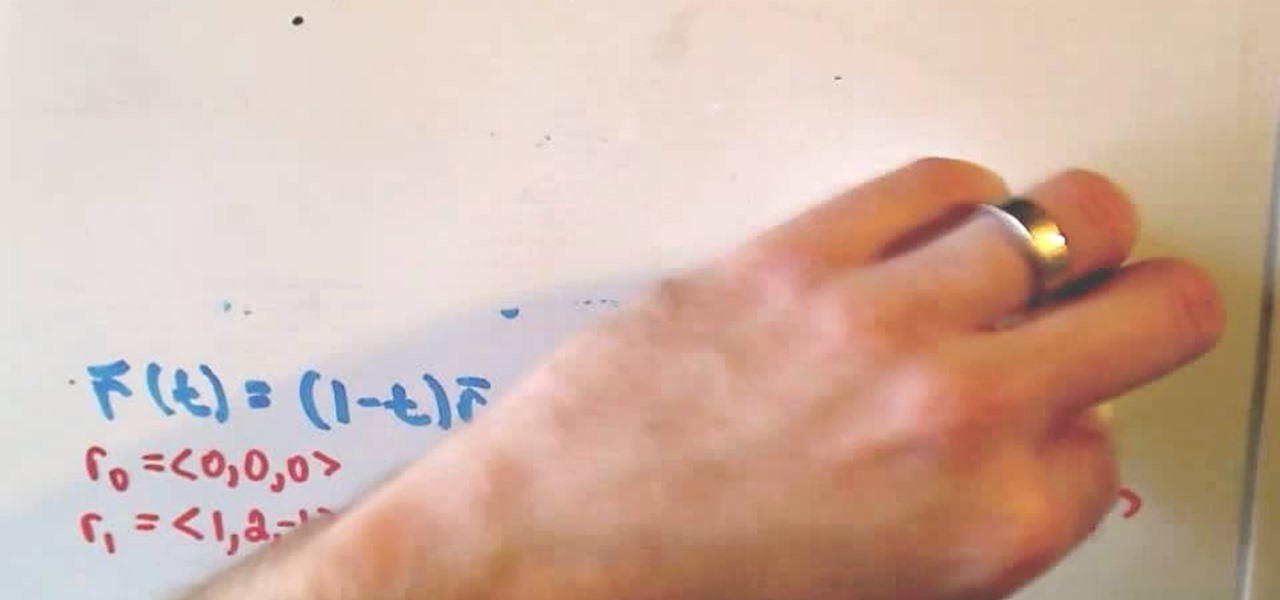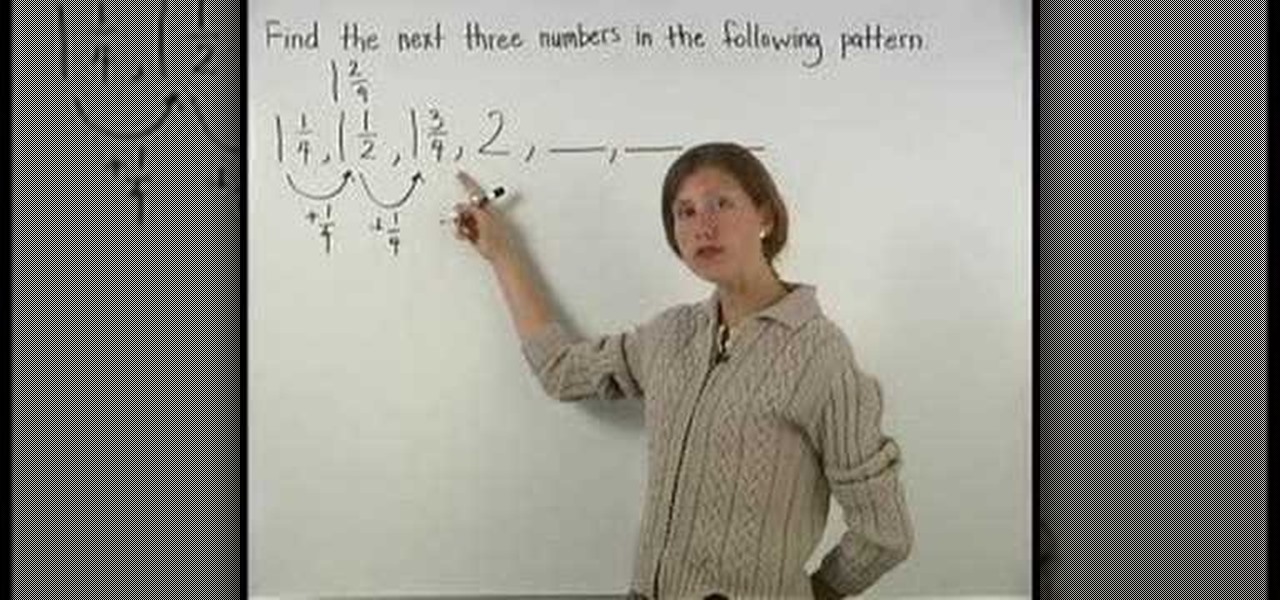Active Math Posts


How To: Graph an equation in point-slope form
This video tells you how to draft an equation in point-slope form. Consider the equation (y+4) = 2(x+7) for example. The formula for the point-slope form is (y-y1) = m(x-x1). To plot the graph you have to identify m the slope, the x intercept x1 and the y intercept y1. In this equation the slope is 2 and (x1,y1). The x intercept according to the formula is -x1 but the given value is +7 so you have to figure out what will give you +7,only -(-7) can give you +7 so the point is -7 and now the y ...
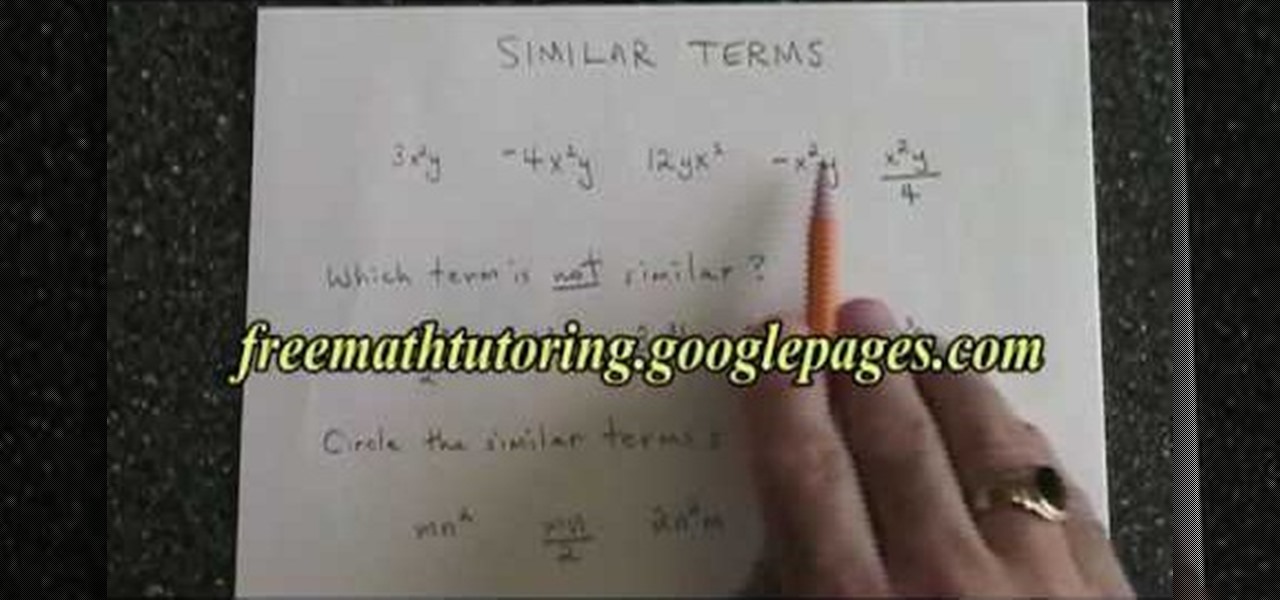
How To: Identify similar terms in polynomials
In this tutorial the instructor shows how to identify similar terms in a polynomial equation. He states that in similar terms the variables and their exponents are exactly the same but they may differ in the co-efficient. He shows how to identify similar terms by using some examples. He shows that a change is even the co-efficient makes them dissimilar terms. Similar terms can be further added as the variable of both the terms is same. This video gives an idea of what similar terms are and ho...
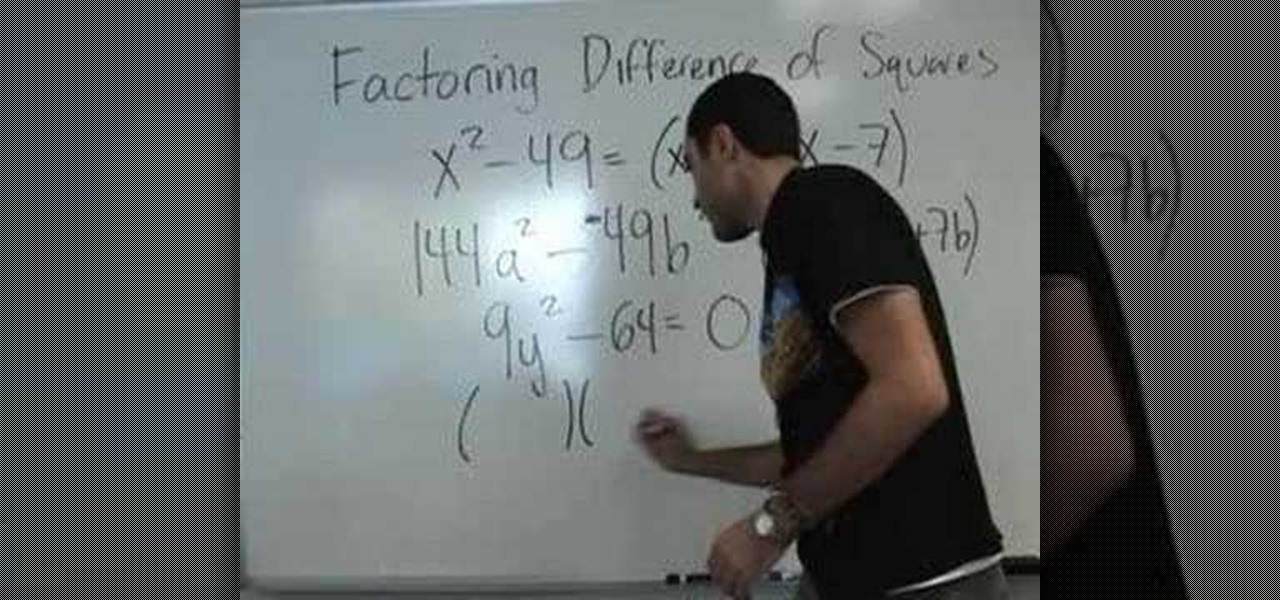
How To: Factor differences of squares
A video that demonstrates one of the basic techniques involved in factorizing an equation that contains the difference of two terms which are also perfect squares themselves and are equated to 0.

How To: Find the order of operations with fractions & decimals
In this video, the instructor shows how to find the order of operations with fractions and decimals. If you have an equation with both fractions and decimals, you can convert the decimals to fractions, or fractions to decimals to have the entire equation in either decimals or fractions. In this video, the instructor shows how to do this in either way. To convert fractions to decimals, just divide the numerator with the denominator. This method cannot be used if the decimals are repeating deci...
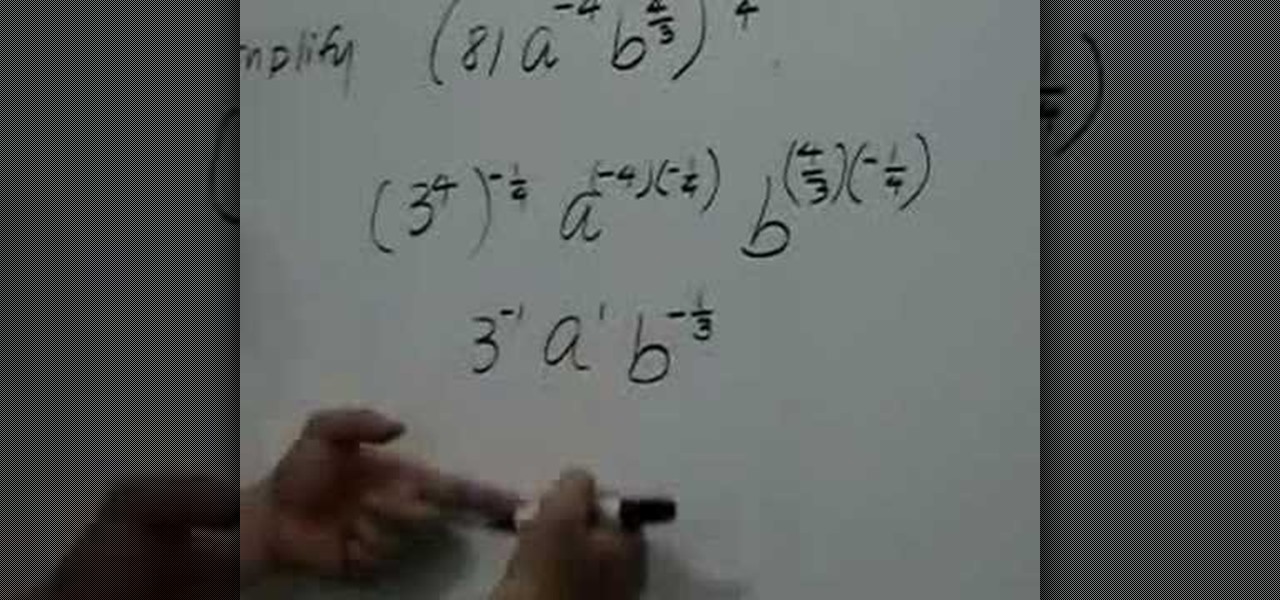
How To: Simplify algebraic expressions with rational exponents
Want to know how to simplify expressions including rational exponents in algebra? Learn how with this free video lesson. From Ramanujan to calculus co-creator Gottfried Leibniz, many of the world's best and brightest mathematical minds have belonged to autodidacts. And, thanks to the Internet, it's easier than ever to follow in their footsteps (or just finish your homework or study for that next big test).
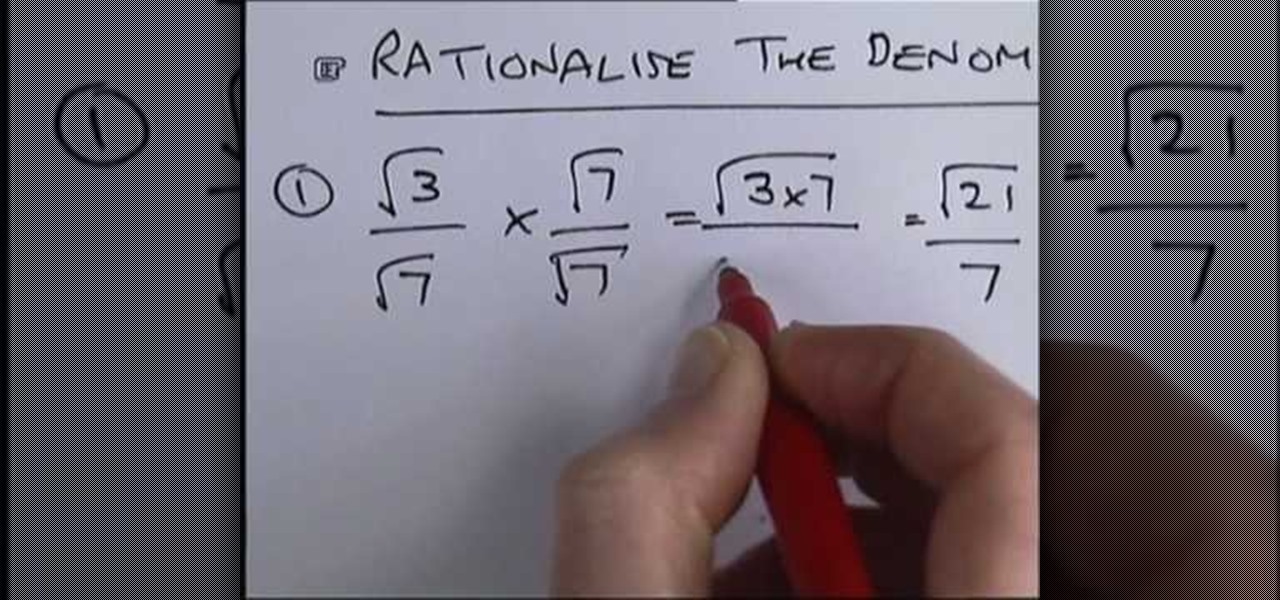
How To: Rationalize a denominator that contains a surd
In this video, we learn how to rationalize a denominator that contains a surd. First, you need to rationalize the denominator by removing any square root sign. To do this, you will multiply the fraction but the flip of the denominator over itself, with the square root. Then, you will multiply the top by the bottom with the square root and this will remove it from the equation once you do the math to multiply it out. Once you're done, the number will be rationalized and you will have the answe...
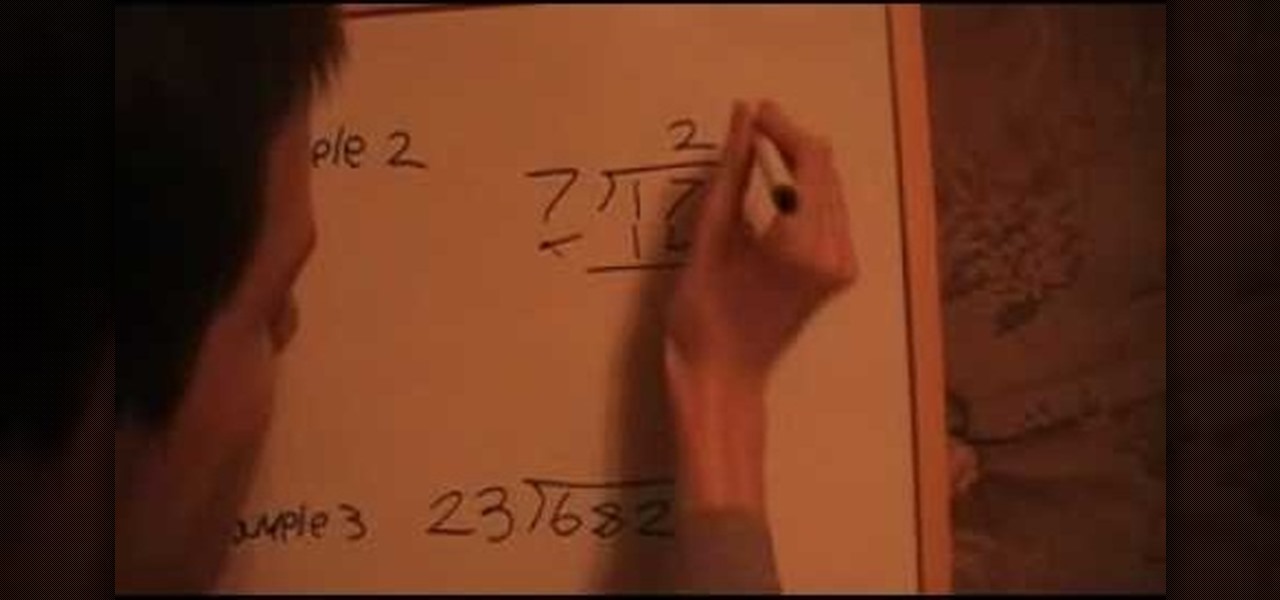
How To: Do long division without a calculator
This video shows you step by step how to do long division without the use of a calculator. The video shows viewers two different ways to solve a division problem. It first shows how to do the problem the traditional way, then it shows how to do it according to the long division process. The long division process is where you write the whole division, multiplication, and subtraction process out showing all your work. Long division is mainly used when dividing large numbers. There are three com...
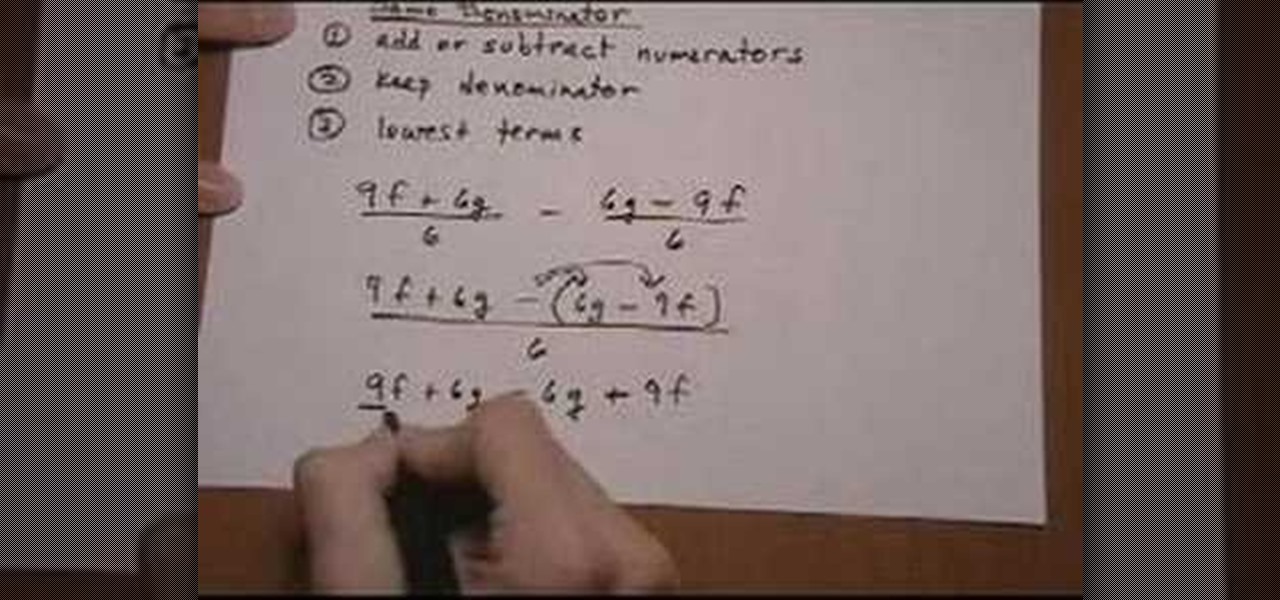
How To: Add/subtract rational expressions w/ same denominators
This is about adding and subtracting expressions with the same denominators. Go back to simple arithmetic such as 5/6-2/6. All you do is go right across and 1.)Add or subtract the numerator (5-2). 2.) Keep the denominator. 3.) Change to lowest terms. Use the same general rules. In the problem: 9f+6g/6 - 6g-9f/6, you put the numerator all together so that it reads: 9f +6g - (6g-9f) put parenthesis around the second part so you don't forget to distribute the whole part. The 6g's cancel out and ...
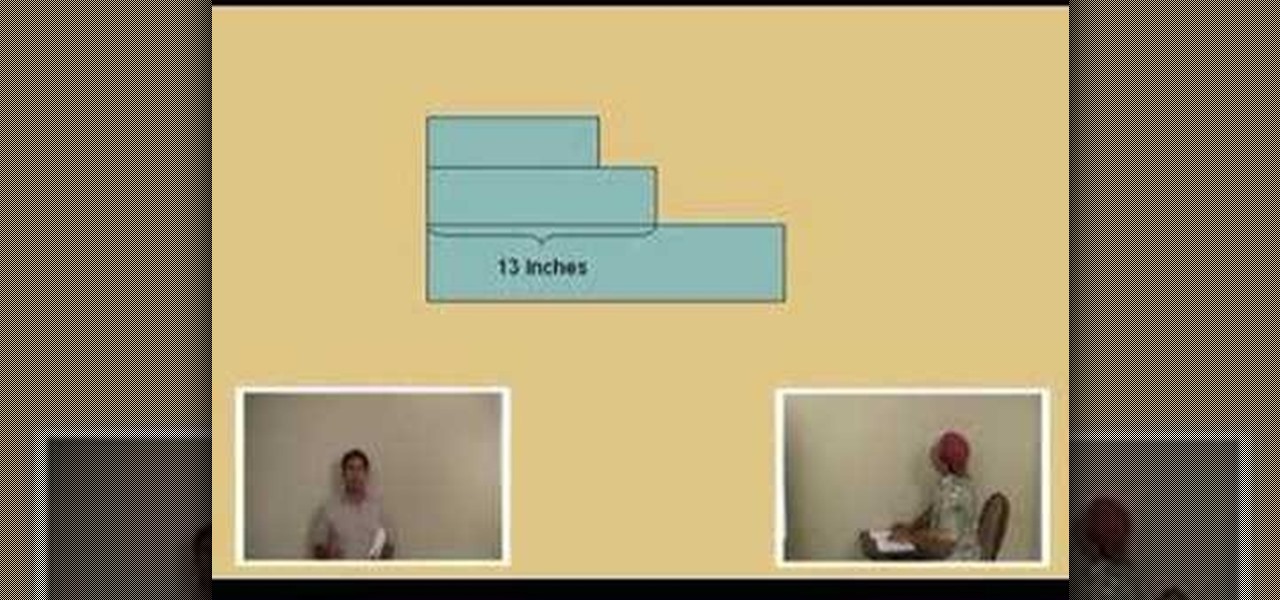
How To: Find volume using rectangular prisms in pre-algebra
Lawrence Perez, from Saddleback College, and his assistant Charlie, give this pre-algebra lesson on finding the volume using rectangular prisms. You'll learn the formula for volume, and how to apply it. Get out your best pirate suit, and learn some math.

How To: Solve a probability math word problem
In this lesson, you will learn how to solve a probability word problem. Need help with your algebra and geometry? Well...

How To: Solve a quadratic equation by completing the square
From Ramanujan to calculus co-creator Gottfried Leibniz, many of the world's best and brightest mathematical minds have belonged to autodidacts. And, thanks to the Internet, it's easier than ever to follow in their footsteps (or just finish your homework or study for that next big test). With this installment from Internet pedagogical superstar Salman Khan's series of free math tutorials, you'll learn how to solve quadratic equations by completing the square in intermediate algebra.

How To: Calculate math without a calculator
Before the calculator and even the abacus was invented, there was a little instrument called the human brain that we used to do math. Remember that? While most of us turn to our trusty Ti-84s to do calculus homework or whip out our cell phone calculators to determine how much we should tip at Johnny Rocket's, it can often be much faster to use our own brains, along with a piece of paper and pencil.

How To: Calculate the modulus and argument of a complex number
Need a little help with your math homework? No problem, the Math Centre offers students video tutorials that will provide as a reference guide for self-study. Students get self-study resources targeted to the needs of individual courses, and teachers gain generic mathematics support and study materials for use with students.
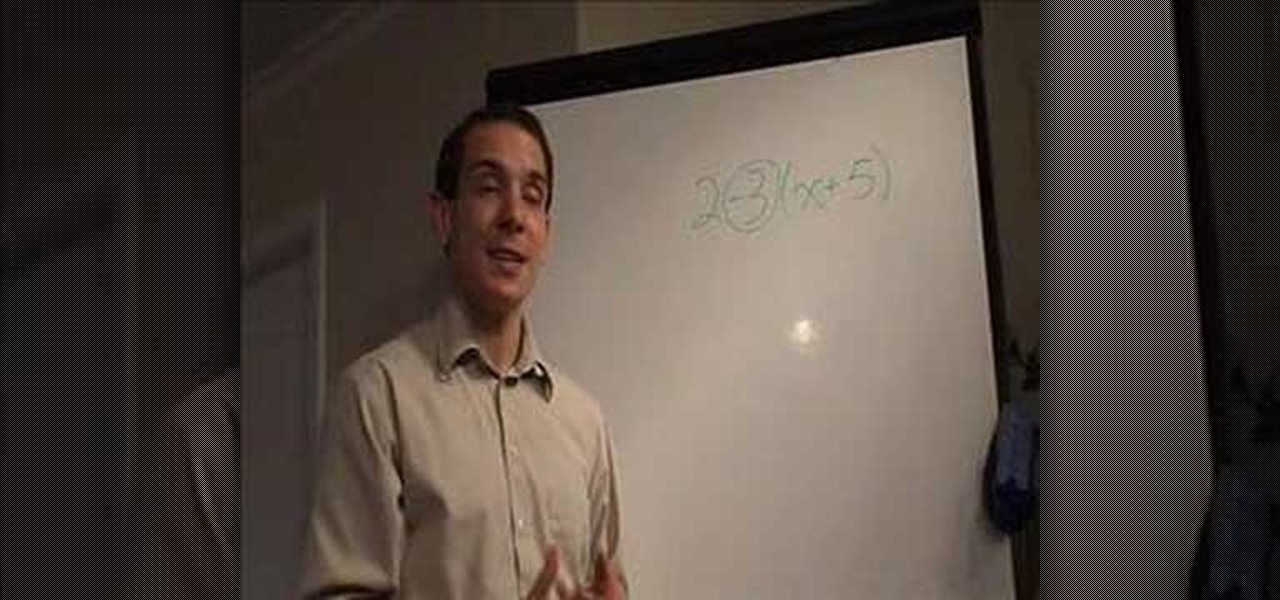
How To: Distribute algebra expressions
Learn how to distribute in simple algebraic expressions to help solve those mathematical equations.
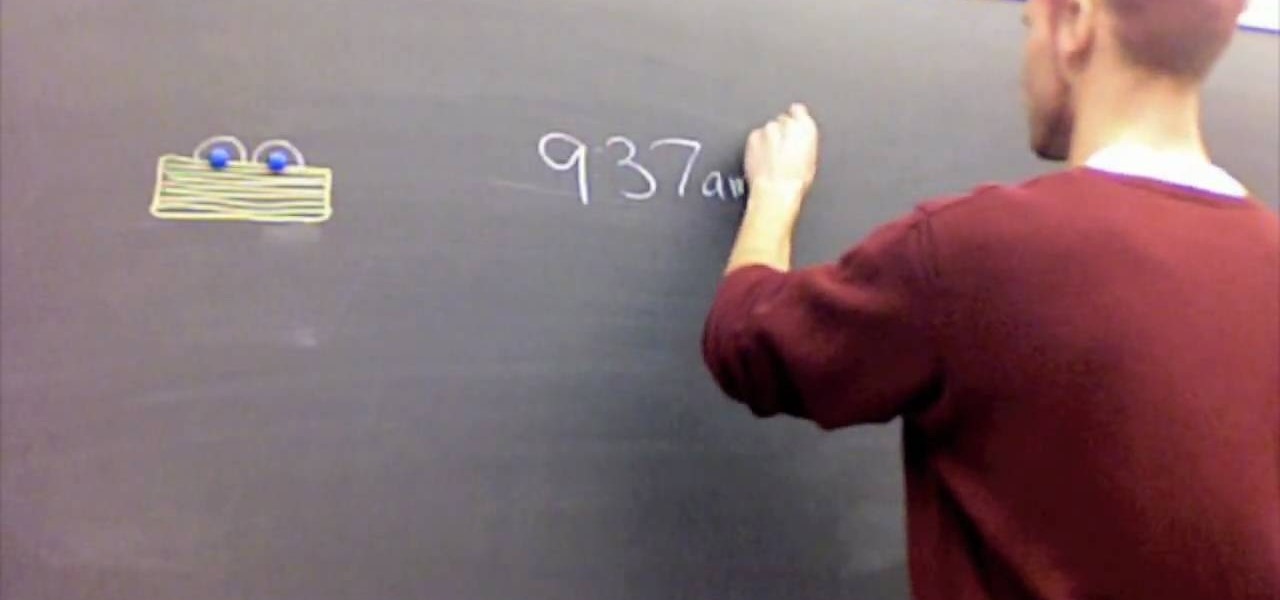
How To: Figure out elapsed time with Mr Binkley
This video is an entertaining way of learning how to quantify how much time has elapsed from one point to another. It opens with a mischievous person using an unauthorized computer, claiming he had only been on for a shorter time than what was calculated by the owner. The video then instructs how to figure out such a calculation by creating a T-chart. One the left side of the T-chart, the previous time is shown, along with new times as each hour or minute is added. On the right, the desired t...

How To: Calculate percentages by example
In this tutorial the author explains of how to find percentages using examples. He explains that x percent of some number y is x multiplied by y and divided by 100. He goes on and explains this concept with numerous examples. He suggests a short cut to movie the decimal point of a number two digits to the left to divide that number by 100. The author demonstrates many more similar tricks and short cuts using which one can easily solve percentage problems. So if you are looking for a good tuto...
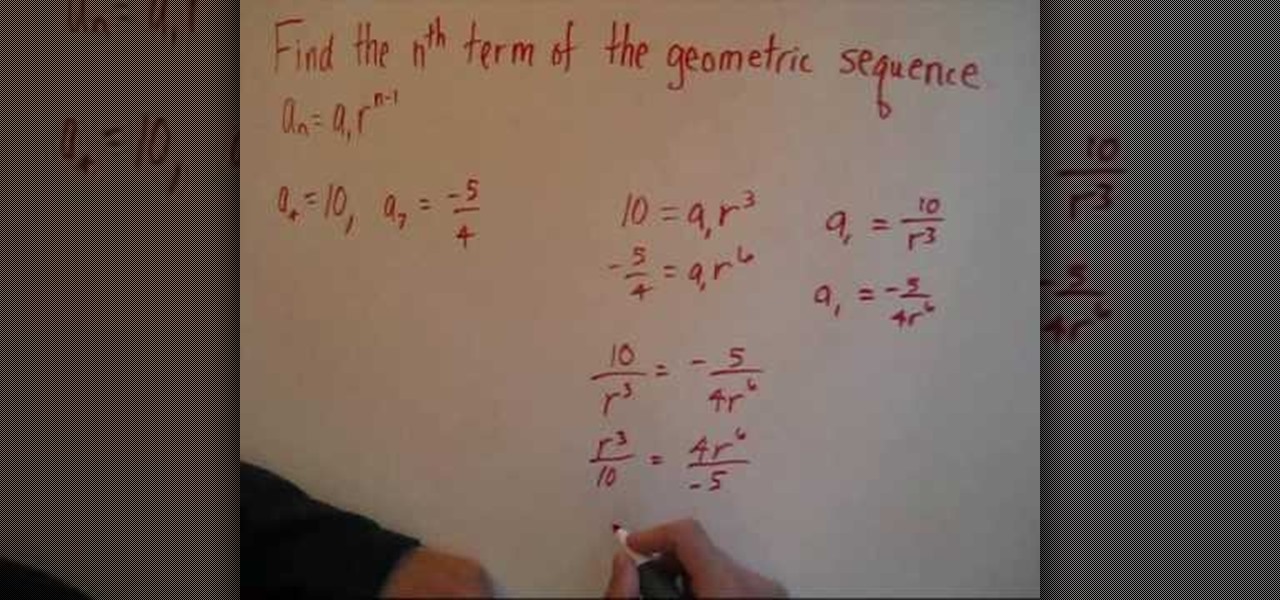
How To: Find the nth term of a geometric sequence
Looking for a primer on how to find the nth term of a geometric sequence? See how it's done with this free geometer's guide. From Ramanujan to calculus co-creator Gottfried Leibniz, many of the world's best and brightest mathematical minds have belonged to autodidacts. And, thanks to the Internet, it's easier than ever to follow in their footsteps (or just finish your homework or study for that next big test).
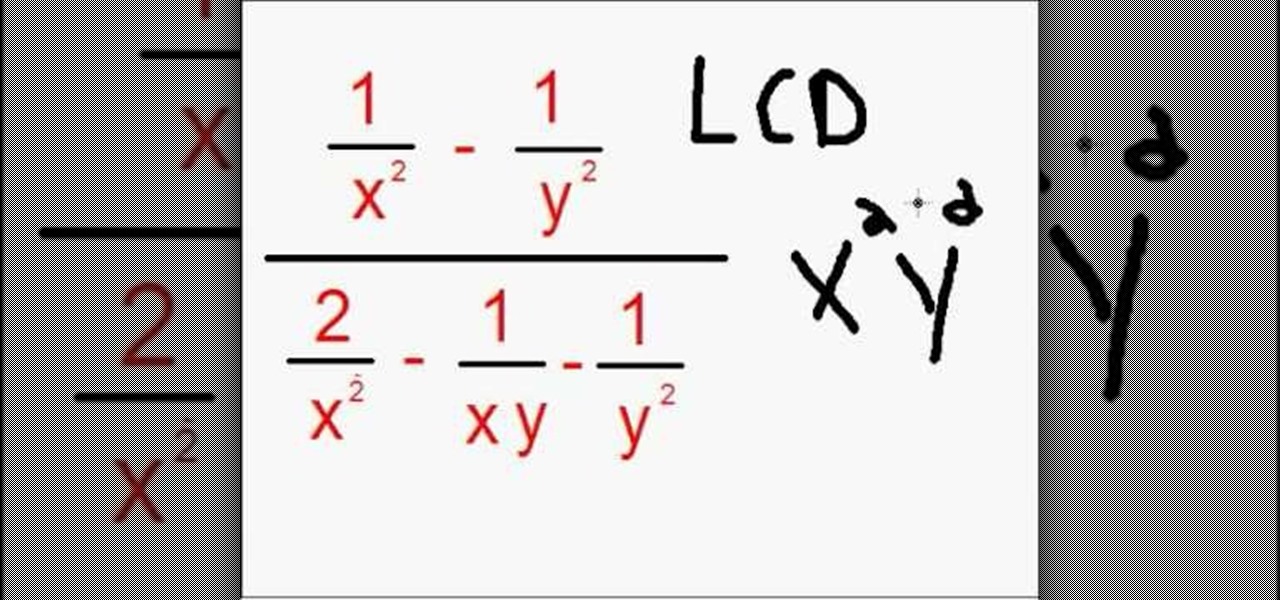
How To: Simplify complex rational expressions
In order to simplify complex rational expressions, it is important to be able to find the lowest common denominator. Complex rational expressions are fractions that are divided by fractions. When you have found the lowest common denominator, then, you should multiply both fractions by the common denominator.
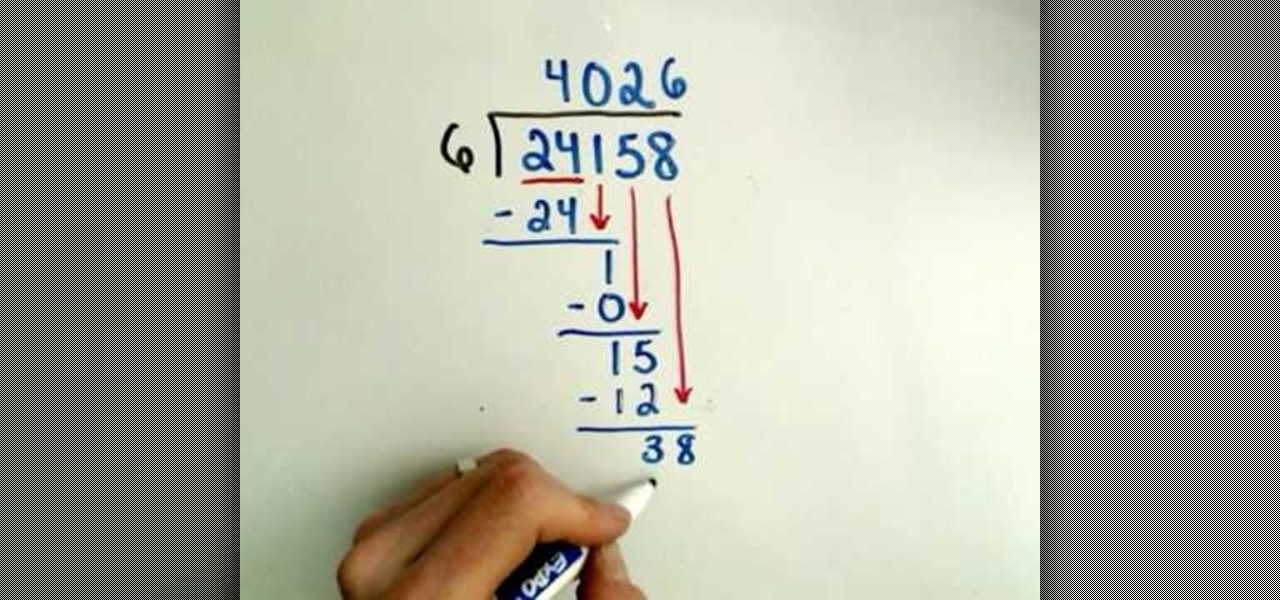
How To: Understand arithmetic basics to do long division
This video shows us how to understand the basic arithmetic for doing long division. Whenever you are about to perform the division operation, the number which is to be divided is called as the dividend and the number which divides the dividend is called as divisor. So while performing a very long division, usually the dividend is put under a bar and the divisor is put upfront. So while dividing the dividend, the divisor is made to check whether it can divide the numbers involved in the divide...
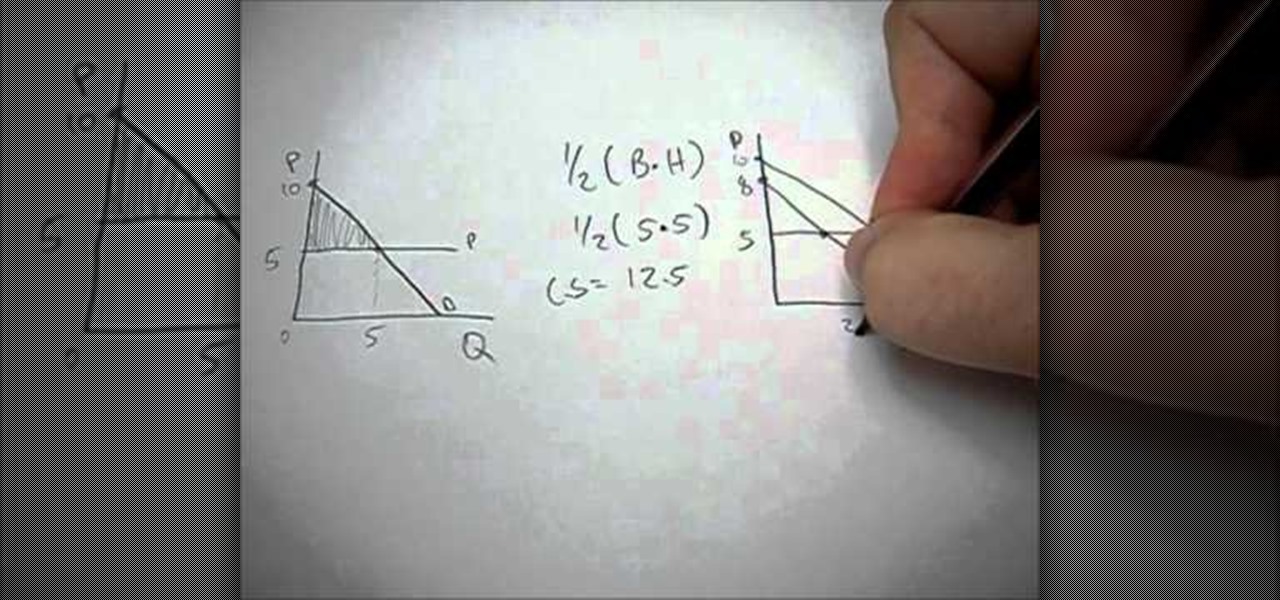
How To: Calculate Consumer Surplus with a few simple equations
Struggling to find and calculate the correct consumer surplus for an econ class or in any other situation? Take a look at this guide that will walk you through the different equations and graphs necesssary to understand and calculate consumer surplus.

How To: Find the LCM & GCF of a number set with a Venn diagram
Looking for an easy way to find the least common multiple and greatest common factors for a number set? Try a Venn diagram! Learn how with this free video lesson. From Ramanujan to calculus co-creator Gottfried Leibniz, many of the world's best and brightest mathematical minds have belonged to autodidacts. And, thanks to the Internet, it's easier than ever to follow in their footsteps (or just finish your homework or study for that next big test).

How To: Add and simplify fractions
Ah, adding fractions. It brings back memories of awkward elementary school yearbook photos with braces and having a crush on our super hot Brad Pitt lookalike math teacher. But we digress.
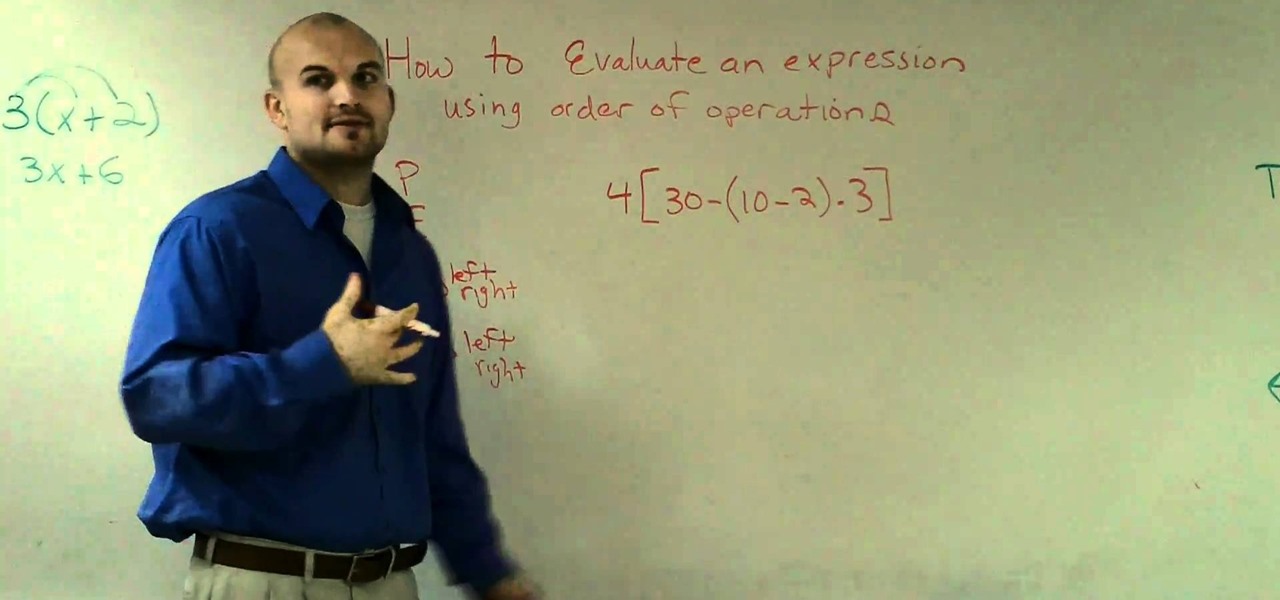
How To: Use PEMDAS to evaluate an algebraic expression
Algebra is not as hard as it looks. Learn how to evaluate expressions correctly by using the order of operations, which can easily be remembered as PEMDAS- Parentheses, Exponents, Multiplication, Division, Addition, Subtraction. You can solve any problem in algebra with this approach.

How To: How Round Is Your Circle? Engineering Puzzles Explained
Can you dissect an equilateral triangle into pieces that can be rearranged into a square? If you think you can, you may have mastered the Pythagorean theorem.

How To: Solve combination and permutation problem
Check out this instructional math video that demonstrates how to solve combination and permutation math problems. In the 16th lesson, learn how to solve SAT problems using the Official SAT Study Guide. Here are the math problems and their page numbers that this video covers:

News: The Magical Mathematics of Doodling
For someone who loves math as much as Vi Hart (a self-proclaimed "mathematical musician"), she doesn't pay an awful lot of attention to her math teacher. But that's ok. Cuz somehow her wonderfully whimsical doodling transforms into mini lessons on graph theory, mobius strips, binaries, fractals and more.
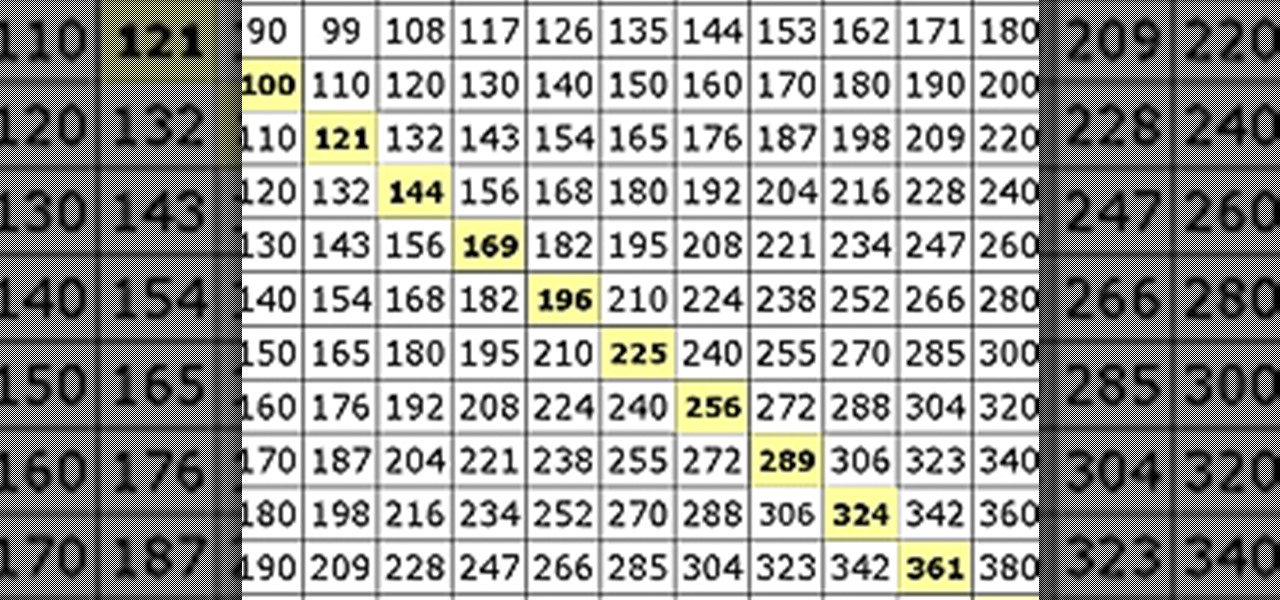
How To: Multiply & Divide Numbers (Basic Elementary Math)
Adding and subtracting may be the easiest of mathematical operations, but once you get it down, multiplication and division can be just as easy. That's why it's called elementary arithmetic. If it were harder, it would be called college algebra or trigonometry. But it's not— it's basic math, and once you get your head around the numbers, you'll never hate math class again! (Okay, maybe you will.)
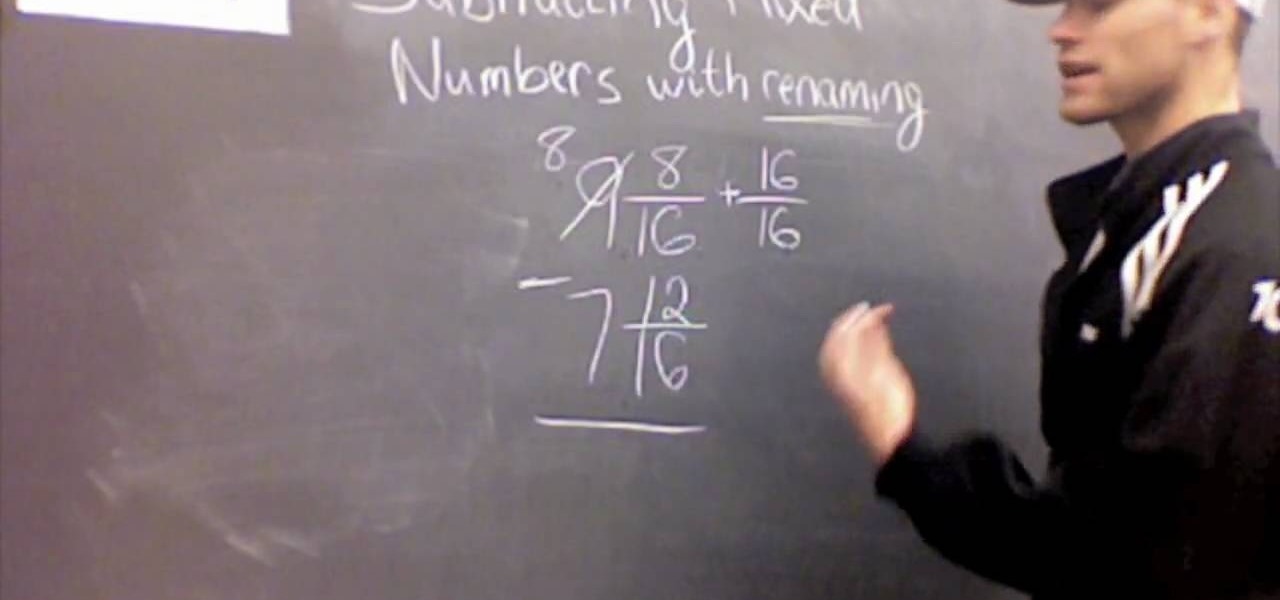
How To: Subtract mixed numbers with renaming with Mr Binkley
This video is about subtracting mixed numbers and renaming. 1. Start on the right side of the problem.
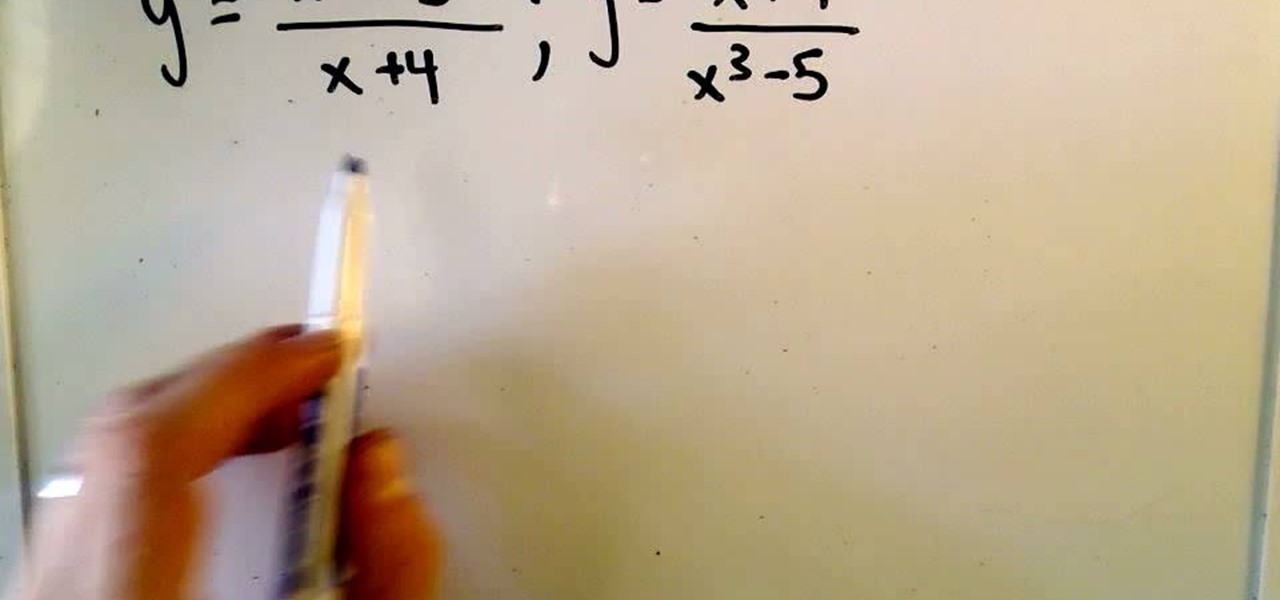
How To: Find the horizontal asymptotes of rational functions
Finding horizontal asymptotes is very easy! Not all rational functions have horizontal asymptotes. the function must satisfy one of two conditions dependent upon the degree (highest exponent) of the numerator and denominator. If the degree of the numerator is equal to the degree of the denominator, then the horizontal asymptote is y= the ratio of the leading coefficients. If the degree of the denominator is greater than the degree of the numerator then y= 0. If the degree of the denominator i...

News: Encrypting Passwords With an Old-School Tabula Recta
Have an old-school tabula recta lying around? No? Then just print out the chart below. Nothing ensures better password security than this centuries-old cipher technique. Here's how it works, via Wikipedia:

News: Eat Candy Buttons Like a Math Musician
Meet Vi Hart, our charming host. Vi is a self-labeled "mathematical musician", who burns paper instruments, cuts food into mathematical shapes, twists balloons into mathematical models, and makes mathematical music with candy buttons.
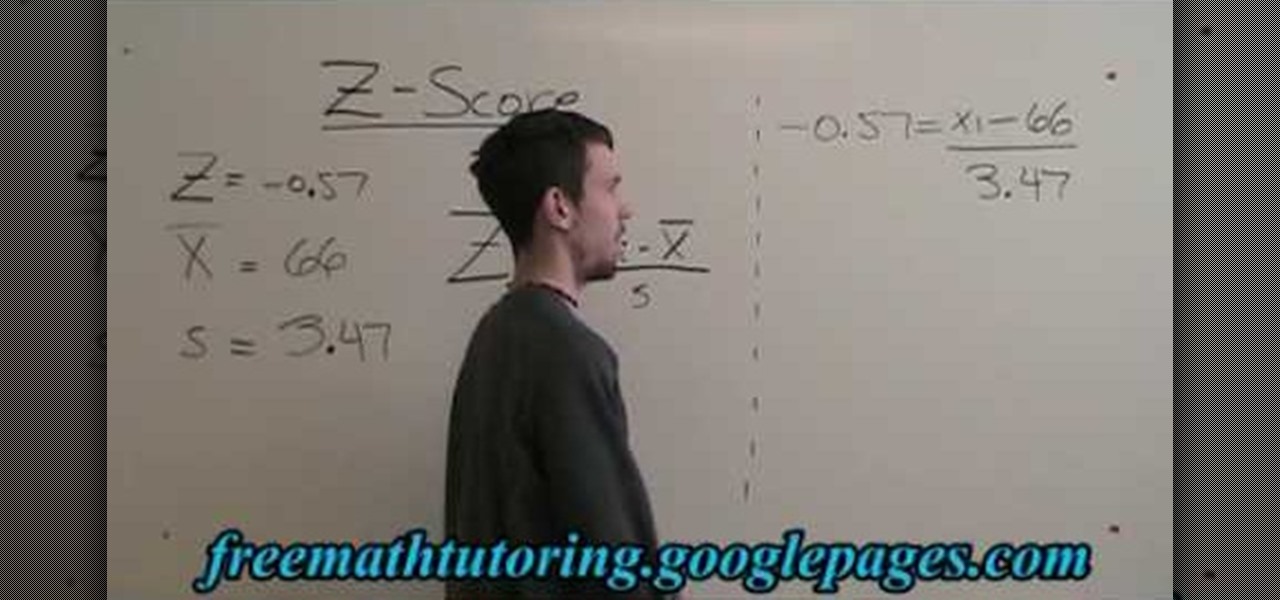
How To: Find a data point (Xi) with the Z-Score formula
In this free video math tutorial, we learn how to use the Z-Score formula to find a data point (Xi) in statistics. With mathematics, as with anything else, not everyone progresses at the same rate. Stats is no exception. Happily, in the age of Internet video tutorials, this isn't a problem. Those who progress quickly can go beyond what's being taught them and those who are struggling likewise have all the time in the world to catch up. Whether you need help finishing your homework or studying...
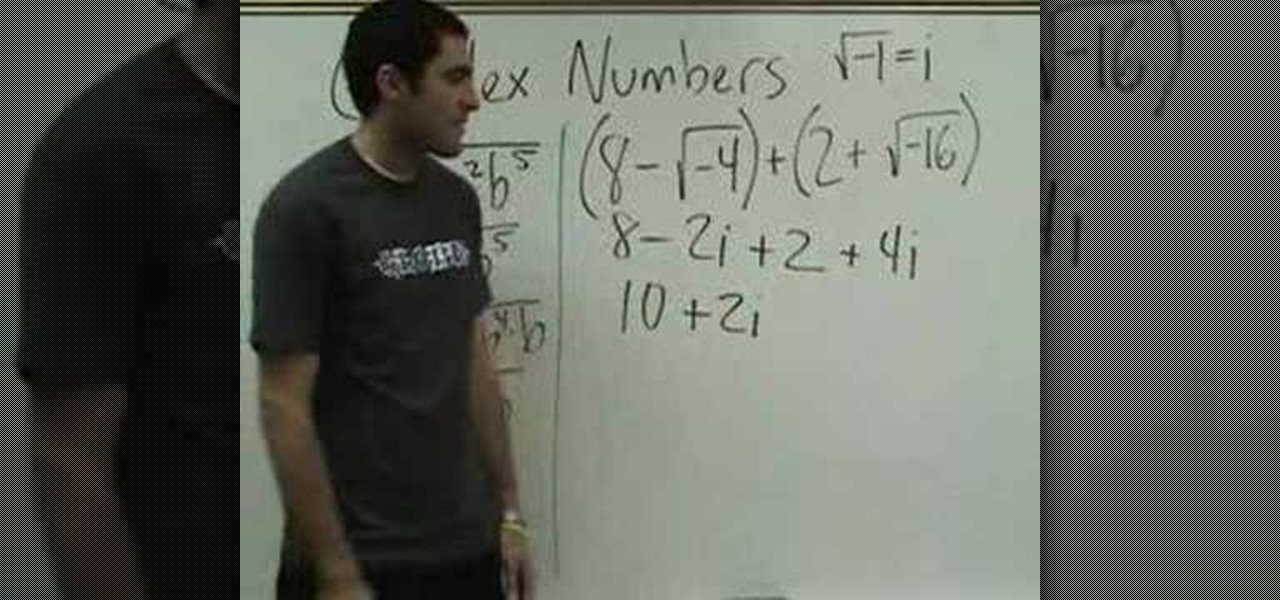
How To: Simplify expressions involving i in intermediate algebra
In this free video math lesson YAY MATH, we learn how to work with imaginary numbers in intermediate algebra. With mathematics, as with anything else, not everyone progresses at the same rate. Algebra is no exception. Happily, in the age of Internet video tutorials, this isn't a problem. Those who progress quickly can go beyond what's being taught them and those who are struggling likewise have all the time in the world to catch up. Whether you need help finishing your homework or studying fo...
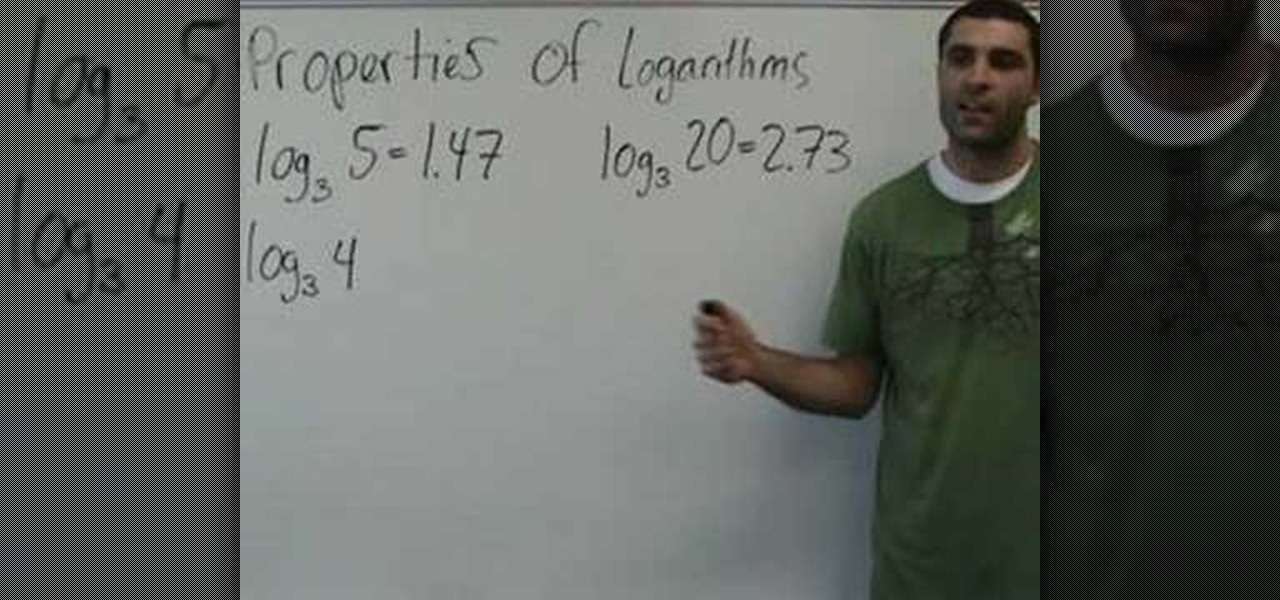
How To: Work with logarithms in intermediate algebra
In this free video math lesson YAY MATH, we learn about logarithms — what they are, how they work and how to solve math problems involving them. With mathematics, as with anything else, not everyone progresses at the same rate. Algebra is no exception. Happily, in the age of Internet video tutorials, this isn't a problem. Those who progress quickly can go beyond what's being taught them and those who are struggling likewise have all the time in the world to catch up. Whether you need help fin...
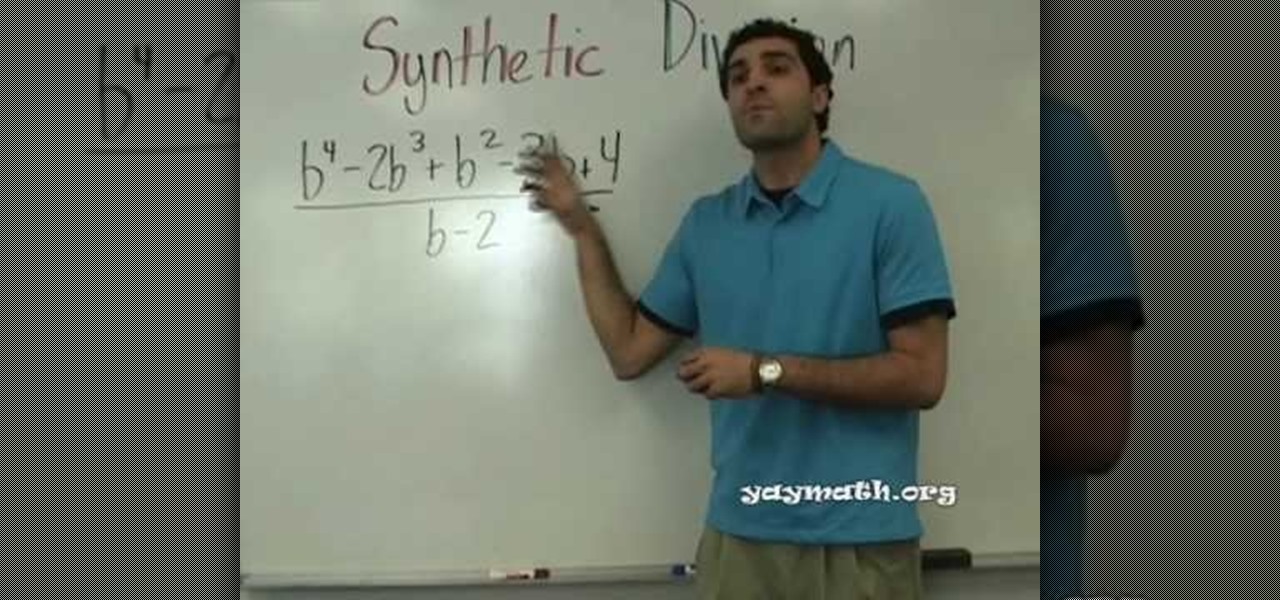
How To: Do synthetic division in intermediate algebra
In this free video math lesson YAY MATH, we learn how to divide a polynomial by a linear factor (e.g., x - a) using synthetic division. With mathematics, as with anything else, not everyone progresses at the same rate. Algebra is no exception. Happily, in the age of Internet video tutorials, this isn't a problem. Those who progress quickly can go beyond what's being taught them and those who are struggling likewise have all the time in the world to catch up. Whether you need help finishing yo...
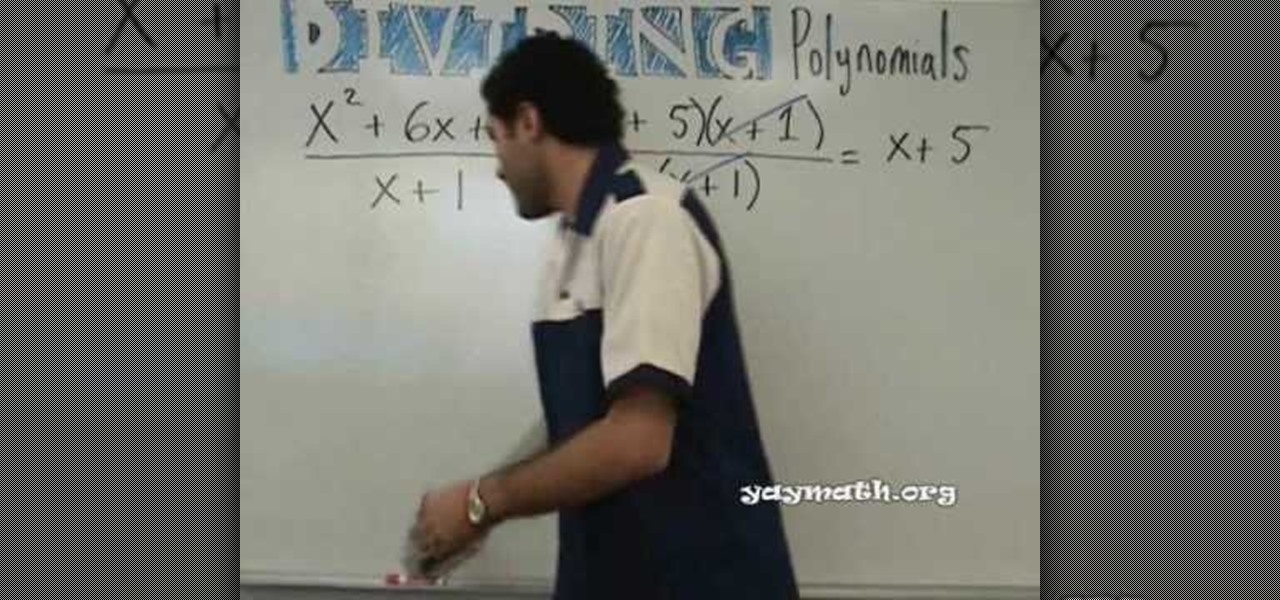
How To: Divide two polynomials in intermediate algebra
In this free video math lesson YAY MATH, we learn how to divide two polynomials using long division. With mathematics, as with anything else, not everyone progresses at the same rate. Algebra is no exception. Happily, in the age of Internet video tutorials, this isn't a problem. Those who progress quickly can go beyond what's being taught them and those who are struggling likewise have all the time in the world to catch up. Whether you need help finishing your homework or studying for that ne...
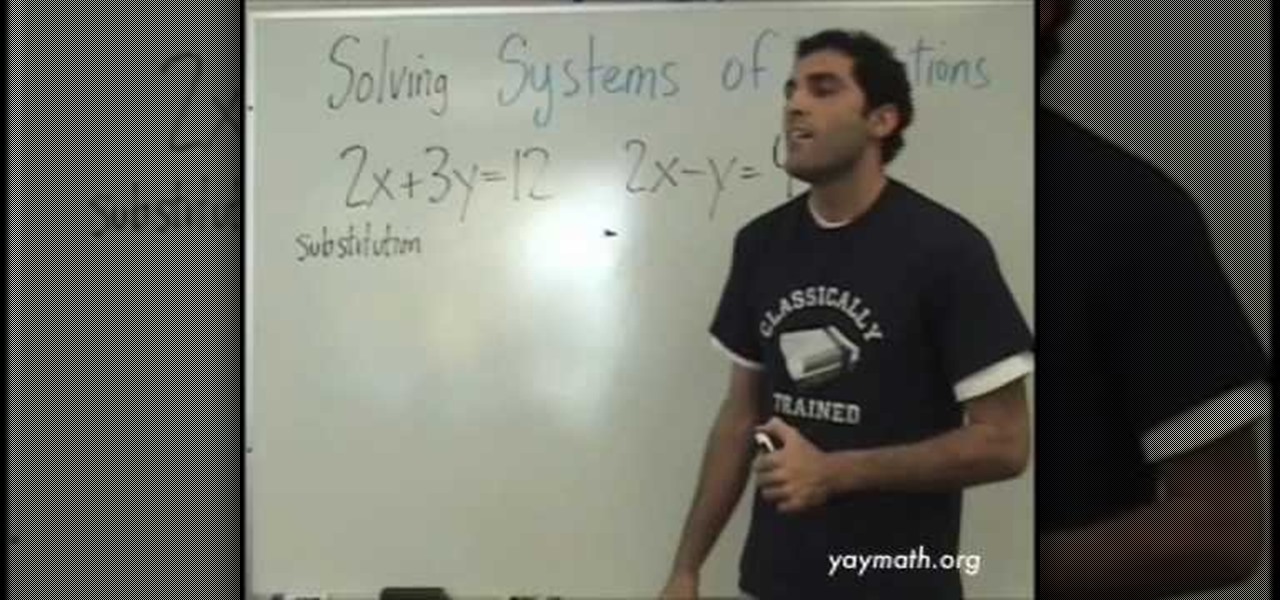
How To: Solve a system of equations with two unknowns in algebra
In this free video math lesson YAY MATH, we learn how to simultaneous equations — sets of equations with multiple variables — in basic algebra. With mathematics, as with anything else, not everyone progresses at the same rate. Algebra is no exception. Happily, in the age of Internet video tutorials, this isn't a problem. Those who progress quickly can go beyond what's being taught them and those who are struggling likewise have all the time in the world to catch up. Whether you need help fini...

How To: Pass Your Math Class With 9 Tips
Not all people can catch up with formulas, and problem solving skills, but with the right attitude and proper time management there's no doubt you'll pass the subject.
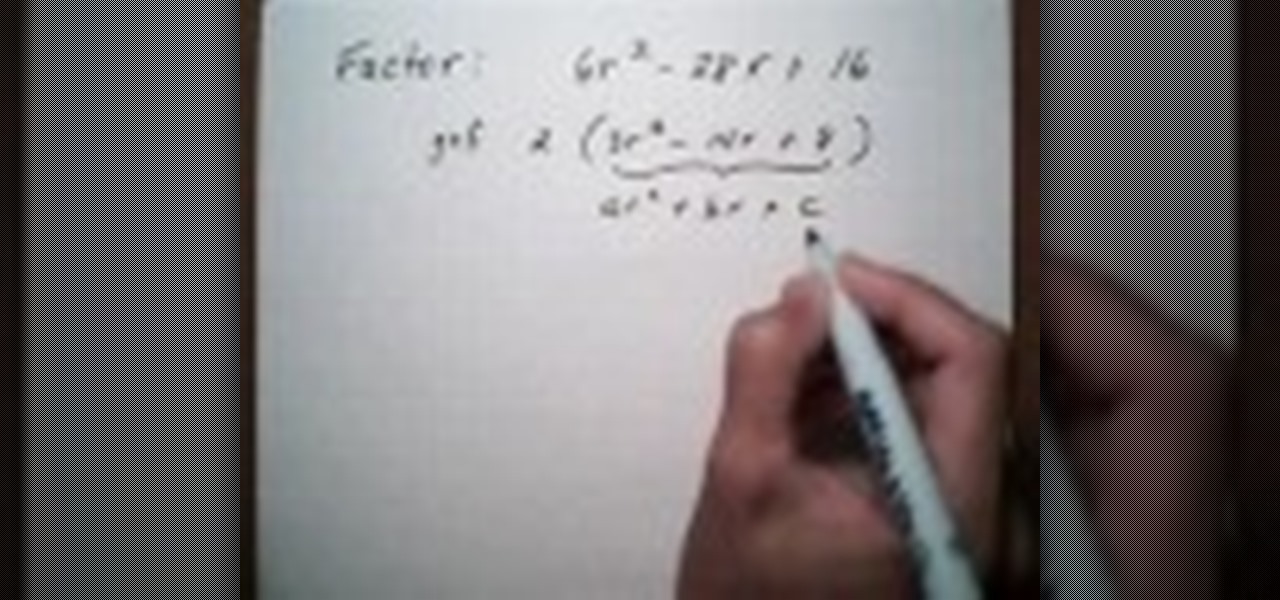
How To: Factor a trinomial by GCF then grouping method
This is a video tutorial in the Education category where you are going to learn how to factor a trinomial by GCF then grouping method. For example how to factor the trinomial 6r(squared) – 28r + 16. The first thing is to get the greatest common factor (GCF) of the numbers. So, GCF of 6, 28 and 16 is 2. The trinomial can now be written as 2{3r(squared) – 14r + 8}. To factor by grouping, see the trinomial as the general formula of ar(squared) + br + c. To factor this, you got to look at the...
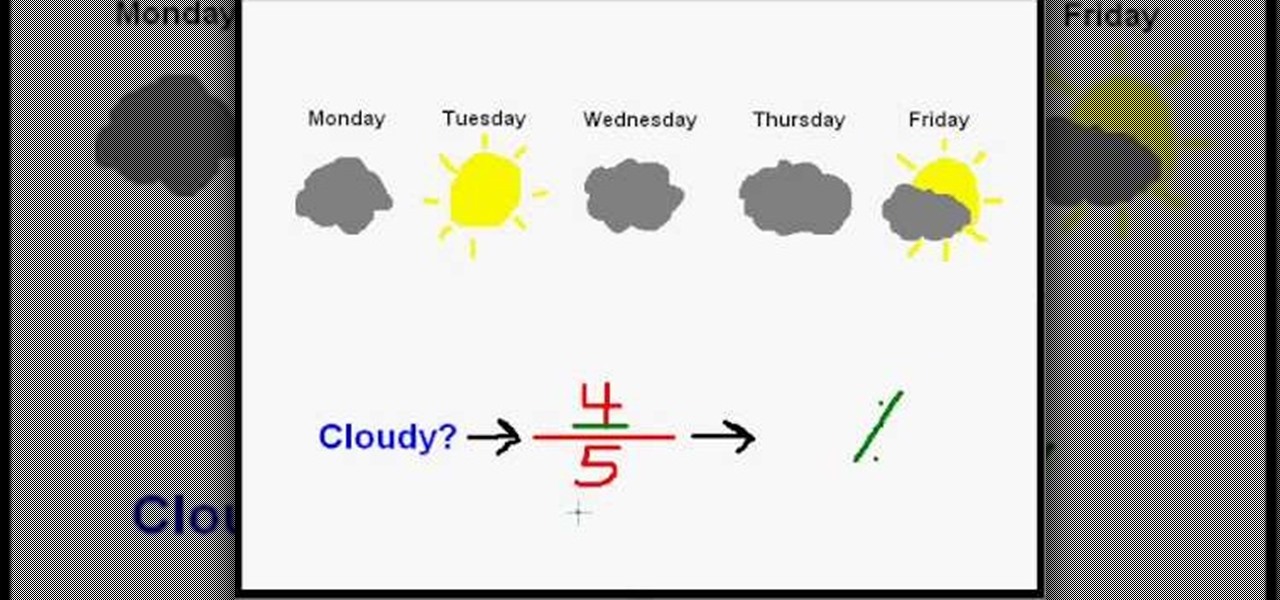
How To: Use probability to predict weather
In this video, we learn how to use probability to predict weather. Probability is the chance of something happening. If you want to know what the weather is going to be like, you can look at the weather report and see what each day is going to do throughout the week. Ask yourself what the probability is that the weather will be cloudy, judging from what the current work week weather is. First, figure out how many days there are total and then find out how many are cloudy versus how many are s...






